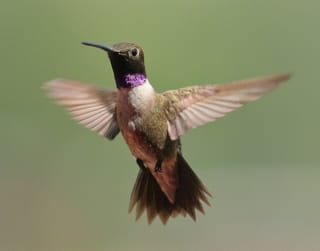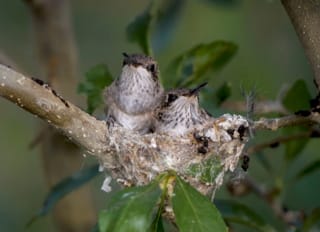Initially this guide displays common birds of all types that are flying right now in our area. Use the selectors below to view rare birds, view birds flying any time, restrict the output to a certain shape of bird, or search by name.
New Mexico is on the western edge of the Central Flyway which is one of the major migration pathways between north and south for birds traveling between breeding and wintering grounds along the Rocky Mountains. This has resulted in the state having an incredible diversity of birds with over 550 different species reported. A little more than half of this number are sighted annually on the Pajarito Plateau. Some of these birds are full-time residents, some migrate here for a few weeks or months, and other are only seen briefly as they pass through the region.
This guide features many of the birds known to frequent Los Alamos county by when they are likely to be seen in the area. You can get additional information on local birds by joining PEEC Birders or going to the eBird website. eBird also includes lists of rare bird sightings and birding hot spots.
Bird References
Birdweb
Cornell Lab of Ornithology
eBird
eNature
Institute for Bird Populations
National Audubon Society
New Mexico Ornithology Society
What Bird
xeno-canto
Subject Area Experts (all guides)
Steve Cary (butterflies)
Beth Cortright (insects)
Terry Foxx (invasive plants)
Leslie Hansen (mammals)
Richard Hansen (fish, mammals)
Dorothy Hoard (butterflies, trees)
Chick Keller (flowers, herbarium)
Shari Kelley (geology)
Kirt Kempter (geology)
Garth Tietjen (reptiles)
David Yeamans (birds)
Web Development and Content Management
Pat Bacha
Jennifer Macke
Graham Mark
Akkana Peck
Contact
Please contact us for local nature questions and sightings. We welcome comments, corrections, and additions to our guides.
For more information about local nature, please visit our Nature Blog or subscribe to PEEC This Week.
Make Selection
 Photo: male by Bob Walker  Photo: female by Bob Walker  Photo: immatures by Mouser Williams |  Black-chinned Hummingbird, Alexander HummingbirdBCHU (Archilochus alexandri, Trochilus alexandri)Family: Trochilidae (Hummingbirds) Size: 3.3 - 3.8 in (8 - 10 cm) Flies: Apr 01 - Oct 15 Morphology: slender hummingbirds that are dull metallic green above and grayish white below with black mostly straight bills; males have a black throat with a thin, iridescent purple base; females have a pale throat and white tipped outer tail feather; immatures resemble females Status: native; common Food source: nectar and insects Habitat: alpine meadows, woodlands, thickets, chaparral, orchards Typical location: White Rock Black-chinned Hummingbirds are seen in large numbers during the summer wherever hummingbird feeders and flowers are present. They will feed at flowers while hovering but will both hover and perch at feeders. They will fly out to catch small insects, pluck them from foliage, or even pick them out of spider webs. In colder weather, these hummingbirds may ingest as much as three times their body weight in nectar in a single day. Males perform a courtship display that consists of flying back and forth in a U-shaped arc. The nest is a compact cup of plant fibers held together with spider webs and camouflaged on the outside. The incorporation of the spider silk allows the nest to stretch, expanding as the nestlings grow. Info Photos Distribution Frequency Featured |
